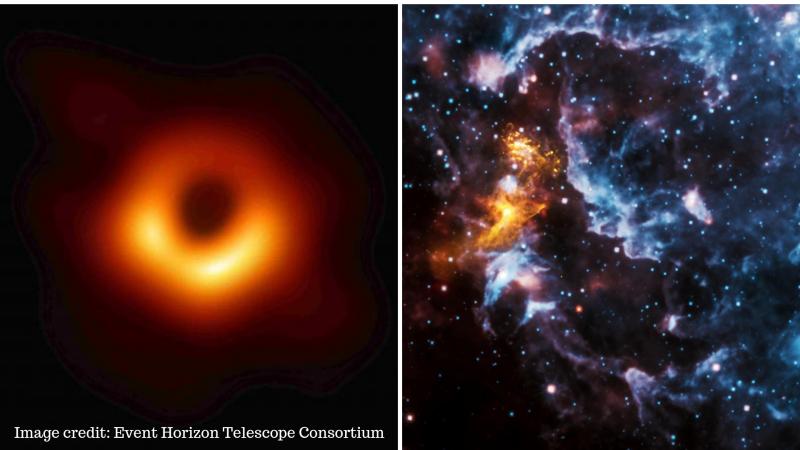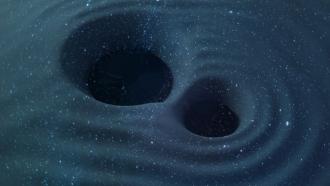
On April 26 2019, scientists at the Laser Interferometer Gravitational-Wave Observatory (LIGO) and the Virgo Interferometer detected gravitational waves from a possible black hole-neutron star collision thought to have taken place 1.2 billion light years away. The event was observed by both LIGO observatories, based in Louisiana and Washington state in the USA, and the Virgo facility based in the European Gravitational Observatory (EGO) in Italy.
Black holes are regions of space where gravity is so strong that nothing, including light, can escape. Neutron stars are extremely dense objects, as dense as an atomic nucleus, made up only of neutrons. The merger of these two massive objects in space will give rise to gravitational waves—ripples in space-time caused by this spectacular, high-energy event. The first detection of gravitational waves, thought to have originated from the merger of two black holes, was announced on 11 February 2016, for which a Nobel Prize was awarded.
The event, observed on 26 April, is the first ever merger seen between a black hole and a neutron star. It is not yet clear whether a visible counterpart of this event can be observed. In the meantime, scientists have narrowed down the possible target area where observers should look for this event to 3% of the sky. They are now busy doing simulations and calculations to find out more about the event, and what exactly observers should expect to see.
LIGO and Virgo scientific collaborations seek to detect gravitational waves from distant cosmic sources. The two collaborations have three geographically distributed detectors that allow sources of such waves to be more precisely located. They have agreed to share and jointly analyse their data.
Following upgrades to their instruments that finished on 1 April, they have detected two back to back events. The first, on 25 April, was a merger between two neutron stars, just one day before the neutron star-black hole merger described above. Since the first detection of gravitational waves in 2015, scientists have observed two neutron star mergers, 13 black hole mergers and one possible black hole-neutron star merger.
Apart from Virgo and LIGO, many countries, including India, are set to join the race to explore more on these gravitational waves. KAGRA (Kamioka Gravitational Wave Detector), a new Japanese gravitational wave detector, is expected to start working later this year. India’s proposed LIGO-India or IndIGO (Indian Initiative in Gravitational-Wave Observations) is scheduled to start operations in 2024.
IndIGO is envisaged as a collaboration between LIGO and a consortium of Indian Institutes, including the Institute of Plasma Research (IPR) Gandhinagar, Inter University Centre for Astronomy and Astrophysics (IUCAA), Pune and Raja Ramanna Centre for Advanced Technology (RRCAT), Indore. LIGO will provide the design and key detector components, while the Indian side would provide the infrastructure to install it at a suitable location thought to be in Maharashtra.
Editor's Note: The sentence in the first paragraph has been corrected. Virgo Consortium has been changed to Virgo Interferometer. The error is regretted.






